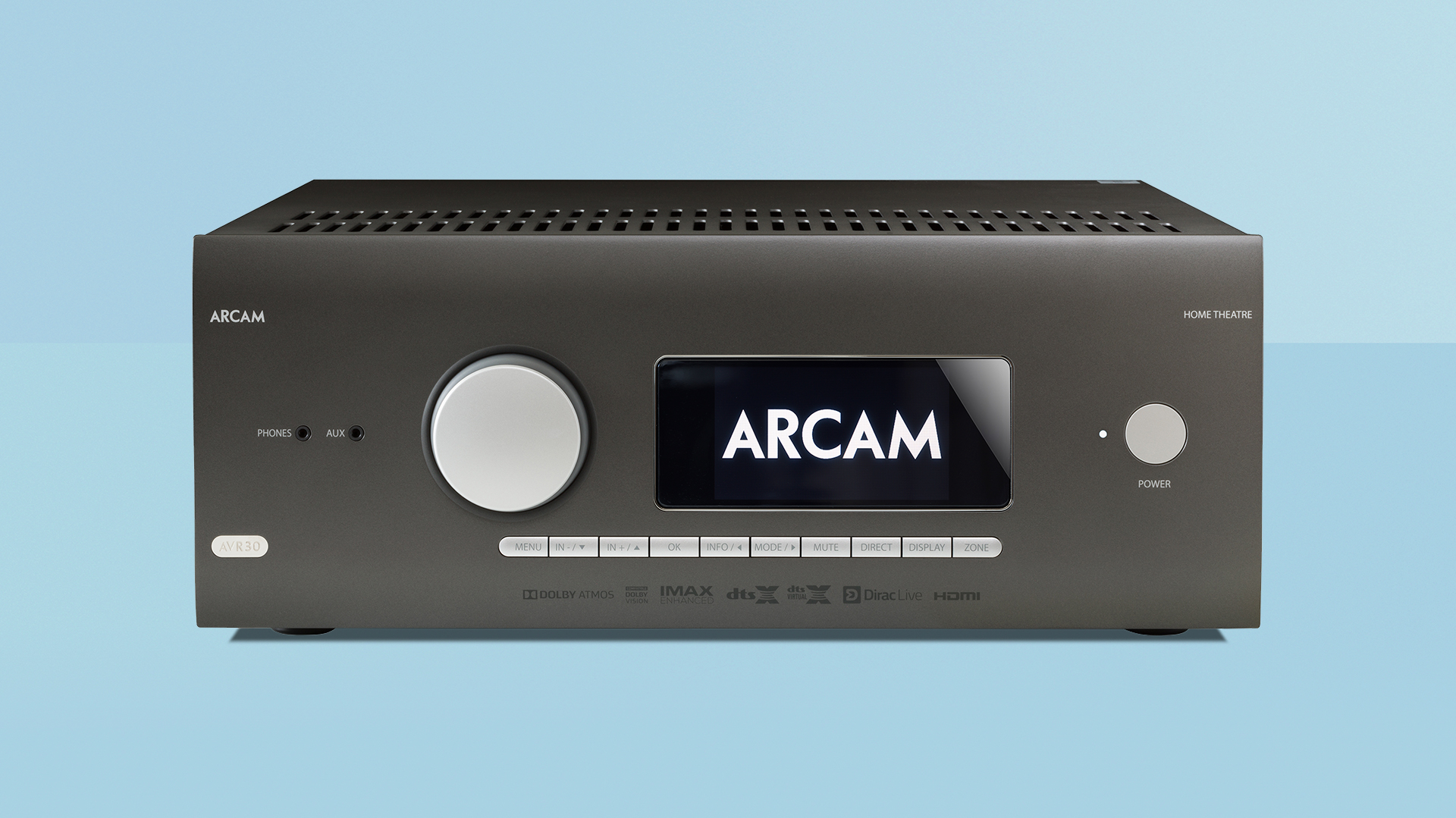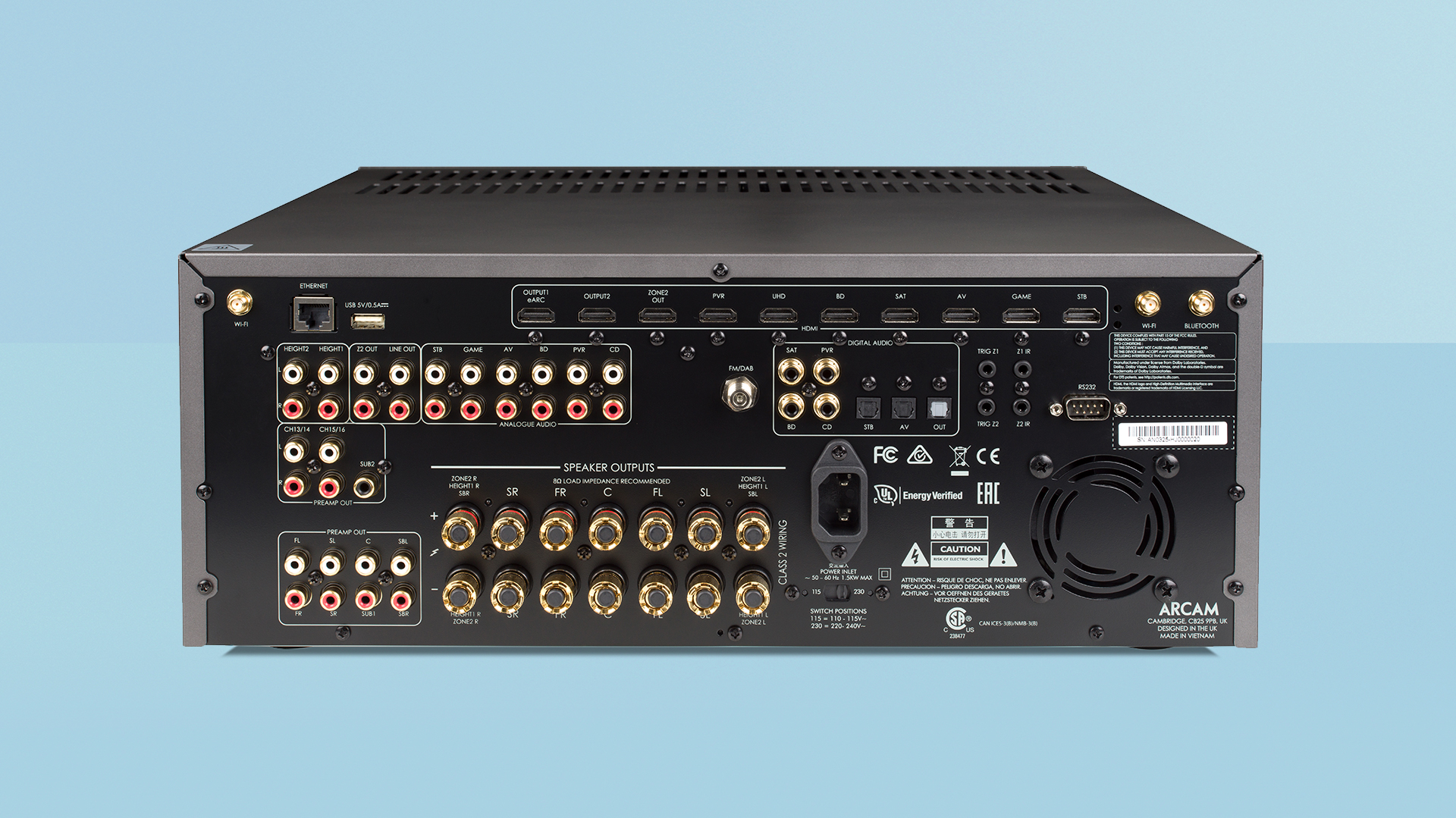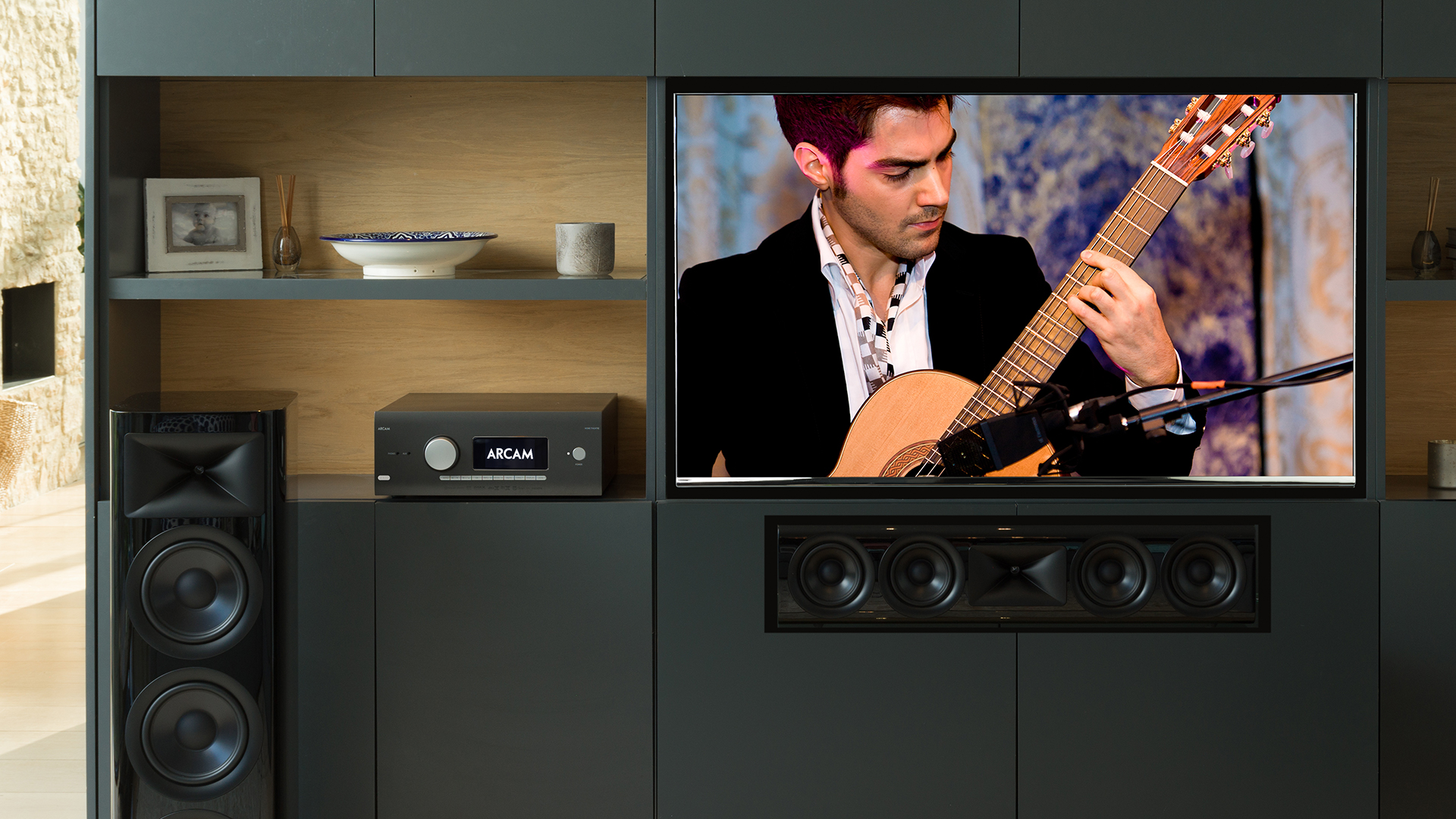Arcam AVR30 review: a truly elite AV receiver for home cinema heaven
The Arcam AVR30 is an impressive high-end AV receiver that combines sublime object-based Dolby Atmos processing with dynamic Class G amplification


The Arcam AVR30 isn’t cheap, but the best rarely is. This flagship AV receiver combines extensive object-based support with class-leading room correction, powerful amplification, and uncompromising immersive processing. If you’re lucky enough to be able to afford it, you won’t find better.
-
+
Dolby Atmos, DTS:X, Auro-3D and IMAX Enhanced
-
+
Immersive 15.2-channel processing
-
+
Powerful Class G amplification
-
+
Sophisticated Dirac Live room correction
-
-
Only 7 amp channels built-in
-
-
No HDMI 2.1 (update coming)
-
-
It’s not cheap
Why you can trust T3

The Arcam AVR30 is the kind of high-end AV receiver that’s designed to be uncompromising in terms of its build, features and performance. Granted it’s not cheap, but for the well-heeled film fan, the AVR30 promises a level of performance that’ll put their local multiplex to shame.
This flagship model supports every audio format imaginable, including Dolby Atmos, DTS:X, Auro-3D and IMAX Enhanced. It has seven channels of powerful Class G amplification, but can process up to 15.2 channels for a completely immersive multi-channel audio experience – it truly is one of the best AV receivers available today.
For a speaker system that's as elite as this receiver, you may need to add some extra amplification, but beyond that there's so little to complain about here. The icing on the cake is the Dirac room compensation, which makes sure that you get custom calibration of the sound for your room.
As a pairing with one of the world's best TVs or best projectors, nothing does it better – but will it be worth the price for you? Let's dig in.

Arcam AVR30 review: Price & features
The Arcam AVR30 is a high-end AV receiver and comes with an equally high-end price of £4,999/$6,600/AU$9,995, so it’s clearly not for everyone. However, if you have the necessary budget to afford the wallet-busting price tag, and the room for a 9.2.6-channel system, you’re in for a treat.
Just remember that there are only seven channels of amplification built-in, so if you’re planning to install a mind-blowingly immersive 15.2-channel system, you’ll need to add another eight channels of power output. Perhaps a pair of Arcam’s PA410 four-channel power amps to match the AVR30?
The fact there are only seven channels built-in might seem strange considering how much the AVR30 costs, but Arcam would rather not compromise its sound quality by trying to cram too many channels of amplification into a single unit. The company feels you can always add more when needed, and if you're working at this kind of budget, it's probably true.
Get all the latest news, reviews, deals and buying guides on gorgeous tech, home and active products from the T3 experts
As it is, the included Class G amplification is seriously powerful and capable of driving the most complex speakers with great efficiency. Class G is also incredibly responsive, allowing the AVR30’s built-in amps to produce a wonderfully dynamic surround sound presence.
In terms of audio formats, the Arcam can not only decode Dolby Atmos, DTS:X, Auro-3D and IMAX Enhanced, but also process a total of 15.2 channels (15 speakers and two independent subwoofers), which means you can go up to an insanely immersive 9.2.6-channel configuration.
The AVR30 also includes Dirac Live room correction, which uses a calibrated microphone to take measurements of each speaker and sub, and then applies sophisticated filters to eliminate the negative aspects of the room, better integrate the bass, and produce a tonally-balanced system.
There are seven HDMI inputs and three outputs, which can pass 4K/60Hz, HDCP 2.2, HDR10, HLG, HDR10+, and Dolby Vision. One of the outputs also supports eARC. While these connections don’t currently support 8K/60Hz or 4K/120Hz, an HDMI 2.1 upgrade is in the works.
In terms of other features there’s built-in Wi-Fi and Bluetooth, plus support for AirPlay 2 and Google Cast. The AVR30 is Roon Ready, supports MQA for lossless high-resolution music streaming, and there’s also Arcam’s MusicLife app. You even get a built-in FM/DAB tuner.

Arcam AVR30 review: Sound quality
The Arcam AVR30 delivers the kind of high-end experience you’d expect from an AV receiver at this price point. The built-in Class G amps produce enough power to drive even the most demanding speakers, and the resulting performance is clean, detailed, responsive and dynamic.
The AVR30 is also unusually lyrical for a multi-channel receiver, making it a great choice for fans of music and movies. It’s two-channel performance is exceptional, and the inclusion of Dirac Live allows the system to be room corrected and balanced to produce a cohesive soundstage.
If you add extra amplification you can run a full 9.2.6-channel system, and the results are insanely immersive with Dolby Atmos soundtracks. The receiver creates a perfect three-dimensional hemisphere of sound, with effects moved around, above and behind you with exacting precision.
The AVR30’s ability to seamlessly steer sounds from speaker-to-speaker is often breathtaking, while the tonal balance is equally impressive. The lower frequencies are also perfectly integrated, resulting in a powerful foundation of bass that gives modern movie soundtracks greater impact.

Arcam AVR30 review: Design & usability
The Arcam AVR30 sports an unusual two-tone design based around a dark grey front panel and a large silver volume dial with matching buttons. It’s all fairly minimalist, and the only connections at the front are for auxiliary audio and a pair of headphones, with both using 3.5mm jacks.
The middle of the front panel is dominated by a large full-colour LCD display. This not only shows the current source, signal type and processing, but can also render album art when streaming. It also provides access to the menus, which is crucial as there’s no on-screen display.
The included remote is clearly laid-out, comfortable to hold, and sports a useful backlight. There’s also Arcam’s MusicLife app, which provides an alternative method of control. Finally the web-based interface offers the most effective way to access the menus and set up the receiver.
Arcam AVR30 review: Verdict
The Arcam AVR30 delivers uncompromising object-based audio delights with a full house of formats including Atmos, DTS:X, Auro-3D, and IMAX. It can process audio up to a staggeringly immersive 15.2 channels, allowing you to run a full 9.2.6-channel system. While there are only seven channels built-in, these Class G amps are incredibly powerful and responsive.
The sound field is precise, expansive and controlled, while dual subs and class-leading Dirac Live room correction ensure deep but balanced bass. There’s a full-colour LCD display, lossless high-resolution audio support, and plenty of HDMI connections with support for 4K/60Hz, HDR10+, Dolby Vision and eARC. All of which makes the AV30 our high-end AV receiver of choice.
Arcam AVR30 review: Also consider
If you're thinking that all this comes at a price that's too damn high, our pick of the more mid-range options is the Denon X3700H, which is also a highly accomplished streamer as well as a superb AV receiver. It already has HDMI 2.1 on board, and also offers Atmos, DTS:X and IMAX Enhanced support. It even has its own room correction. It can process 11.2 channels, so not quite as ridiculous as the AVR30, but probably enough for your home! Here's our full Denon AVC-X3700H review.

Steve Withers is a professional calibrator and freelance journalist who regularly contributes to T3, reviewing audio and video products, and writing articles. Steve has been writing about audio and video products for over ten years and, along with T3, he also contributes to TechRadar, Trusted Reviews, Expert Reviews, AVForums, Pocket-lint, Home Cinema Choice, and Wired. Steve is Level 2 certified with THX, the Imaging Science Foundation (ISF) and the Home Acoustics Alliance (HAA). As such, he remains abreast of all AV technology developments and the latest industry standards as we transition into a new era in home video and audio.